Elements of Interesting Surfing Photography
A quick review of exposure, composition, light, sharpness, action, and local culture can greatly improve your surf photography.
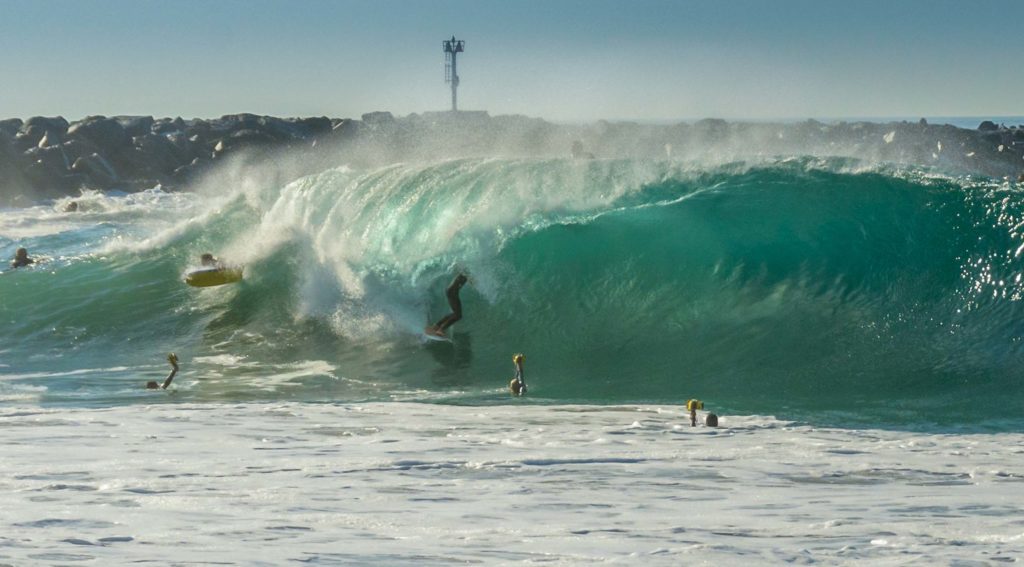
Exposure—Understanding and controlling the relationship between shutter speed, size of opening of lens (aperture) and sensitivity of the camera’s sensor (ISO speed) is key to making sure an image is not to light or dark. Learning to read
your exposure meter is step one. Using your playback histogram to make adjustments is step two. With these two new skills you can “go manual”. You may have seen the T-shirt slogan that says, “Everyone is a photographer until MANUAL” Its true, but with a just a week of practice you can easily gain this ability.
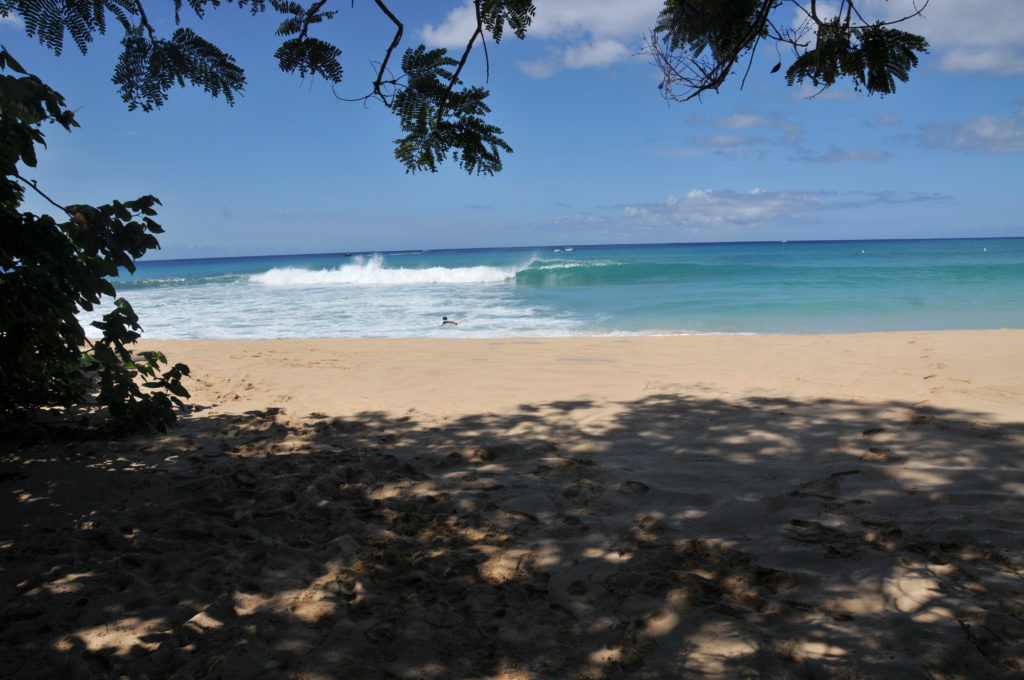
Composition—A viewer’s eye is drawn to the lightest part of an image. In post, you must “darken or crop out bright areas that compete with your subject. The eye is also drawn by “leading lines” such as jetties, reef lines, coastal topography, and the taper of the breaking wave itself. A thoughtful photographer will position to take advantage of these. One can use the “rule of thirds” or the “golden mean” to place the subject in a third of the frame to create interest, or “frame” a subject between objects. Of course, in surfing, the curling wave makes a wonderfully dramatic framing device!
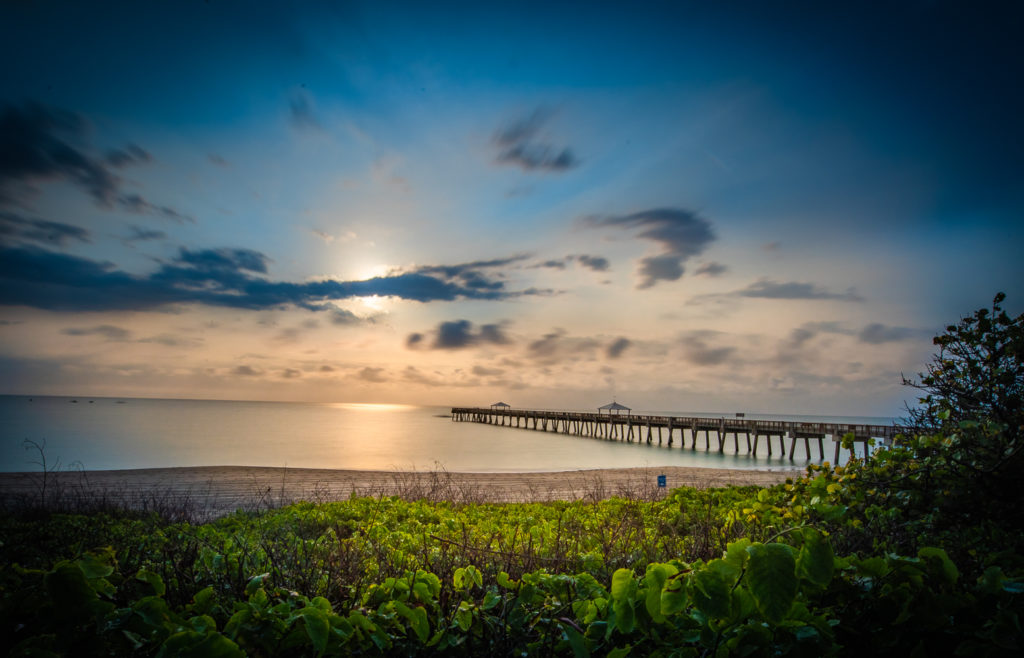
Light—The more a photographer thinks about light—its color, its direction, its intensity or diffusion—the better their images become. Its OK to break rules like shooting toward the sun (when you know how to technically do so). Swimming around your subject, or walking up and down the beach for instance, will give you entirely different lighting looks and feelings.
Sharpness—Back button, continuous auto-focus is the technique to master. Aiming with a small focus target on the
moving subject’s face is the challenge and reward of action
sports photography. Using shallow depth of field can isolate a subject for a “portrait” while using front to back depth of field will create a focused “lineup shot” “Landscape” or “Panorama”. Shutter speeds of 1/1000 of a second or higher
will freeze water droplets and spray. Shutter speeds under 1/100 of a second will create “artist blur” effects.
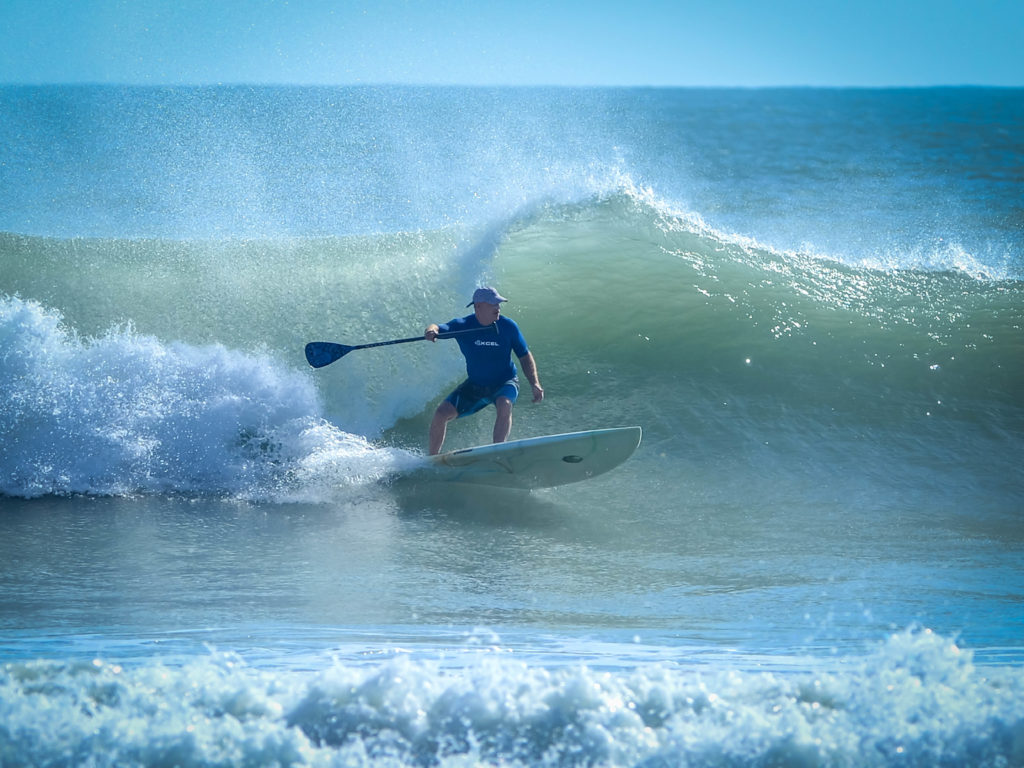
Action—Surfing is both sport and art. Every surfer’s style is
unique—some athletic, some casual and seemingly effortless.
It takes experience—often many years—of actual surfing in
all kinds of breaks (points, reefs, beachbreak) to anticipate what a wave is going to do, and to instinctively “feel” the most interesting moments of a ride. The apex of a bottom turn, lip bash, cutback are more interesting than a transition between turns. A surfer standing upright on a wave’s shoulder far from the falling crest is not a great shot. The
steepest part of the wave is where the action is.
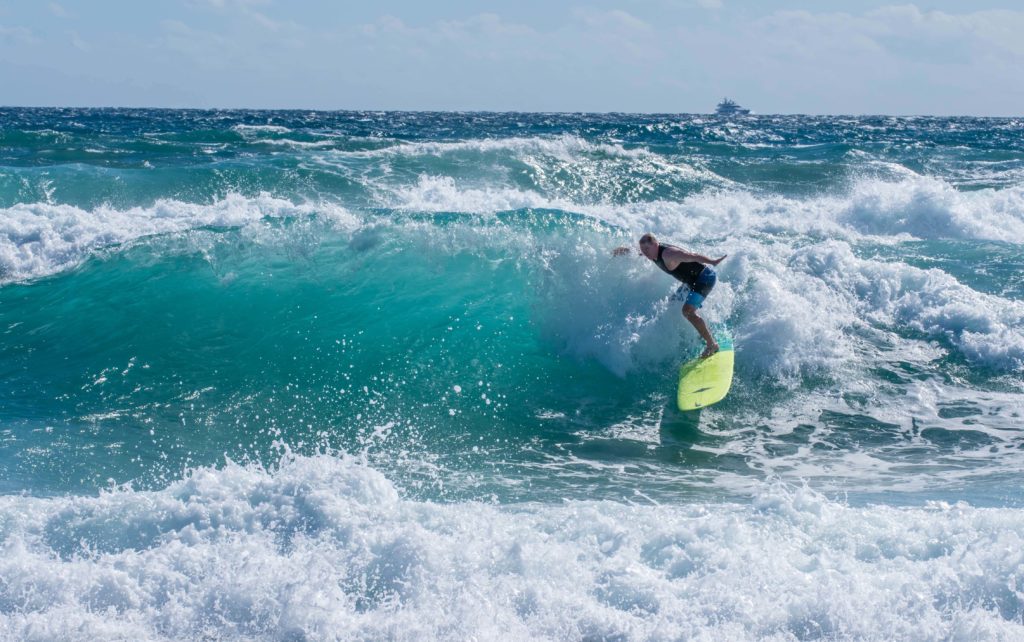
Successful photographer/rider teams “coach” each other and often plan dramatic shots in advance of a session.
Variety—I think of every shoot as a magazine assignment, even though such assignment does not exist. Great story telling includes wide angle line-up shots, local color portraits, Close-up action, and images that tie the action to its unique location. My favorite surf shots are taken through the masts of sailboats, over the shoulder of local fishermen, between celebrating contest crowds, barnacled pier pilings, dramatic coastal scenery or from the perspective of other surfer’s in the water.
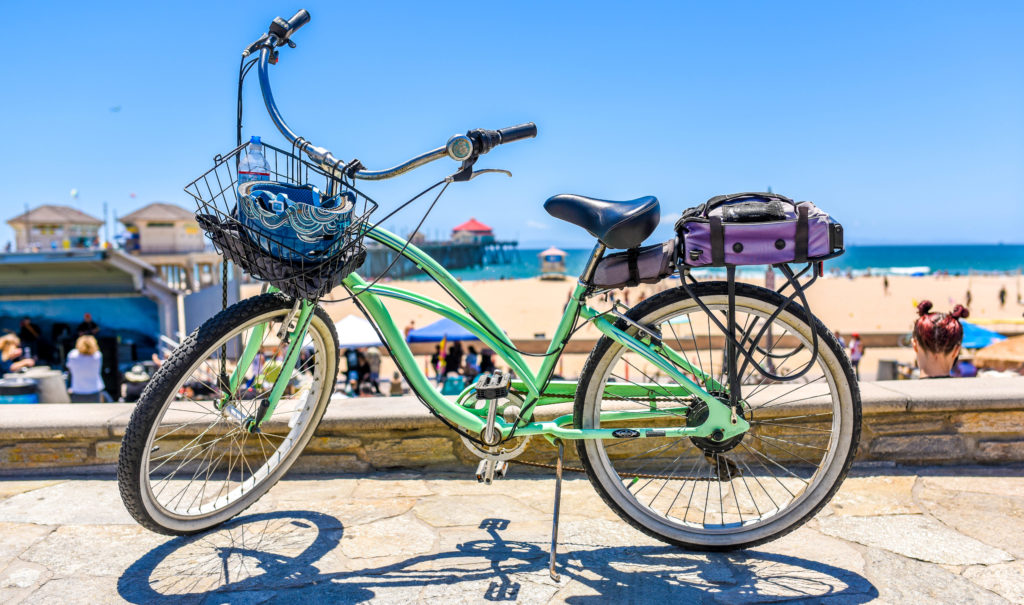
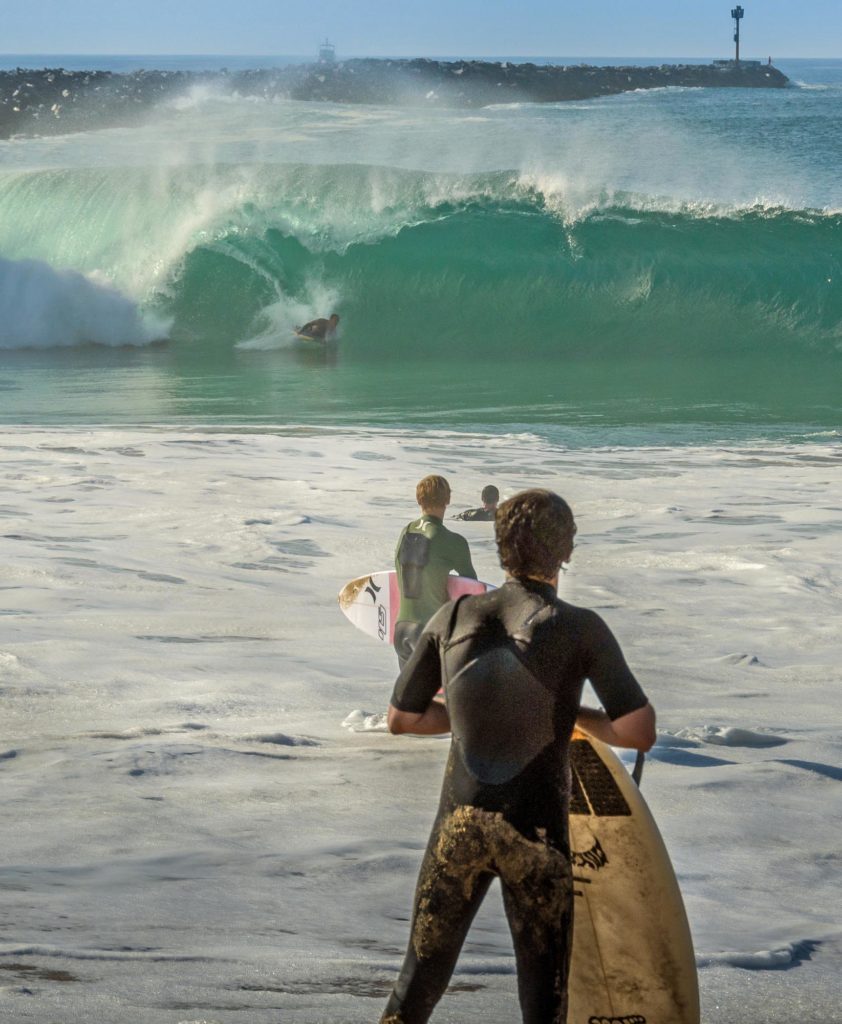
A wave’s surrounding lifestyle and indigenous culture sets the stage and build’s interest in the ultimatesurf break. Equipment and preparation shots are just as important as the “big moment”. The culture of surfing is filled with colorful individuals with strong personalidentities. The whole “scene” creates great surf photography.
Nothing will bore an audience faster that many repetitive “close-ups” of maneuvers. Even die-hard rippers, want to“feel a location” and a wave’s unique fingerprint.
